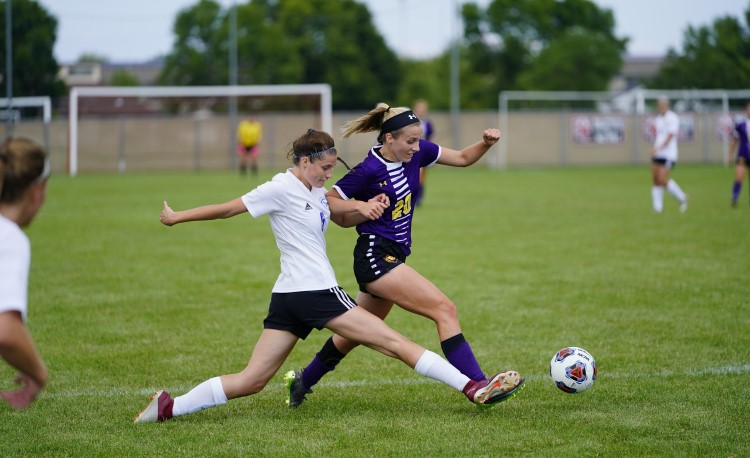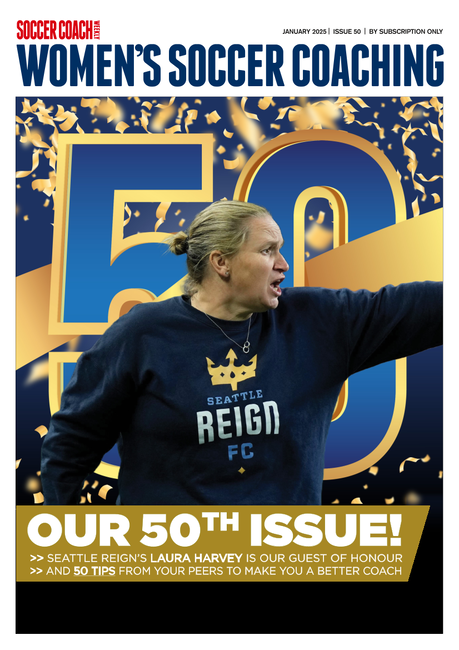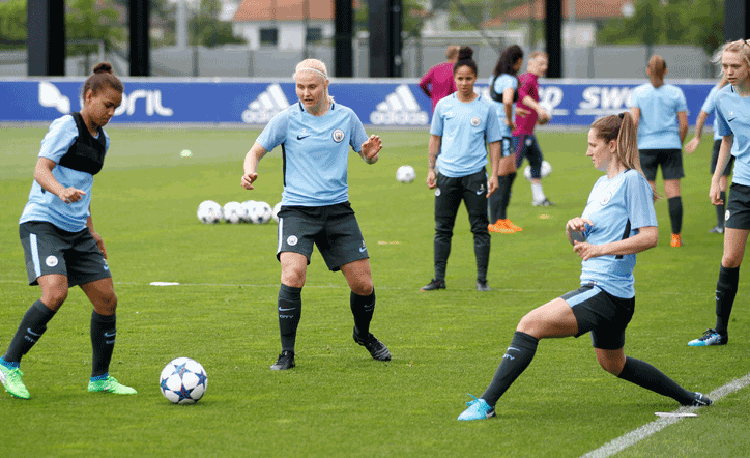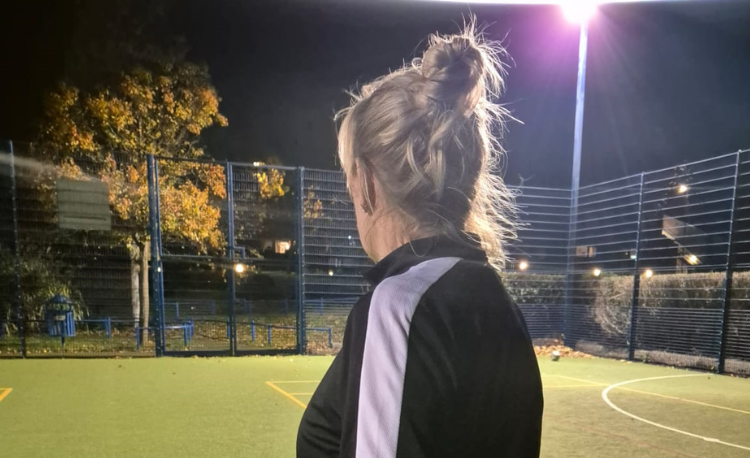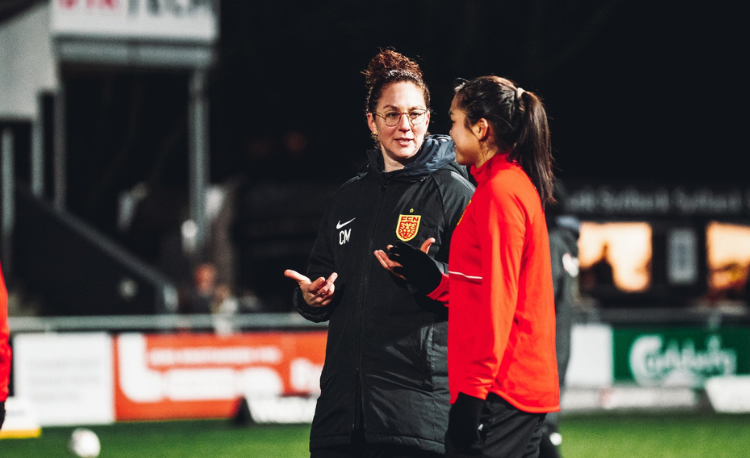You are viewing
1 of your 3 free articles
Developing 'press-resistant' players
Teaching young players to stay on the ball is challenging but can be rewarding, especially when they learn to beat opposition pressure, says Paul Robinson.
Press resistance is the ability to retain possession of the ball, even under high pressure.
Press-resistant players are able to stay on the ball and keep their team in possession, while attracting opponents away from defensive positions, which can help their team to advance up the pitch.
Developing press-resistant players is a long and sometimes frustrating process. It can be broken down into two steps - helping your players as individuals to retain the ball; and then helping them learn when and how to pass it.
Help players retain the ball
Young or inexperienced players can, at times, aimlessly or thoughtlessly kick the ball - and with it, the responsibility - away for another player to deal with.
It is a lot of responsibility to retain possession for the team and players may be frightened of making a mistake for fear of judgement from their parents, peers or coach.
"Developing players’ ability to retain the ball is a step that shouldn’t be rushed..."
Creating an environment where players are comfortable in trying new things and making mistakes will help your players gain more confidence in taking on this responsibility.
Developing your players’ ability to retain the ball as an individual is a crucial step that should not be rushed. It is fundamental that players develop a secure connection with the ball, knowing where their body is in the space around them and how to use it to keep control of the ball.
Only when the player is comfortable on the ball will they be able to take their eyes off it to assess their options, taking into account opponents, teammates and space.
This ability will help them to determine how best to retain the ball, including the element of receiving the ball as an extension of retaining it.
When coaching young or inexperienced players, it is common to see the ball run past them, roll under their foot or bounce off them as they struggle to control it.
For this reason, it is essential to start with them already in possession of the ball. This will enable your players to get more valuable touches on the ball. If your players are more experienced, you can start with them receiving the ball.
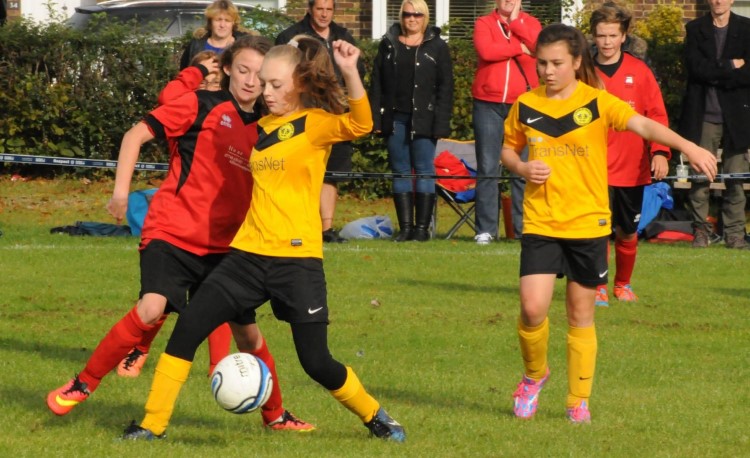
Some coaches and parents race to get to ’proper’ soccer as soon as possible, inspired by the professional players they see on TV who are organised and work as a team, passing the ball to advance up the pitch.
It is often with good intentions that some coaches and parents want their players to ape this style by keeping their positions and focusing on passing. However, this is counter-productive.
Coaching and encouraging passing before the player is comfortable on the ball will make it more likely that they will kick the ball away aimlessly, as they won’t be able to effectively assess their passing options.
Also, any pass played is unlikely to be received effectively if the receiver is not competent at retaining the ball.
An over-emphasis on passing gives your less skilful players a crutch - that of giving the ball to another player to avoid being the one responsible for having to do something with it, such as dribbling or playing riskier passes. It becomes too easy to play a simple pass and let someone else do the hard part.
These less skilful players can also sometimes be observed avoiding the ball altogether, as they lack the confidence and competence to get involved in the game.
By encouraging your players to stay on the ball you are enabling them to practise the necessary skills to develop press-resistance - hide, manoeuvre and reveal the ball.
"Some coaches and parents want players to focus on passing. This is counter-productive..."
Here is what those terms mean:
Hide the ball: The player uses their body as a physical barrier, blocking an opponent to retain possession.
This can sometimes be difficult for young female players as they tend to avoid physical contact.
The use of body combat or rough and tumble games as part of their warm-up can help them get familiar and comfortable with this aspect of the game.
Manoeuvre the ball: The player manipulates the ball and their body to escape the pressure.
Reveal the ball: The player shows the ball to the opponent at the correct moment to beat them 1v1, travel forward or pass forward.
Only when your players are competent at retaining the ball can you coach the next step in the process, which is when and how to release, or pass, the ball.
Passing is the process of the player being able to find a team-mate in a better position and sharing the ball with them. It is a complex skill. Staying on the ball for the right amount of time is important.
Sometimes, a player needs to stay on the ball to entice the opponent to leave their defensive position. At other times, the pass needs to be played quickly to exploit a gap in the defence.
Different types of pass can be used to help break the press and help the team advance up the pitch. It might be a common push pass to a team-mate in a better position, or it might be a flick with the inside or outside of the boot past an on-rushing, or pressing, opponent.
Related Files
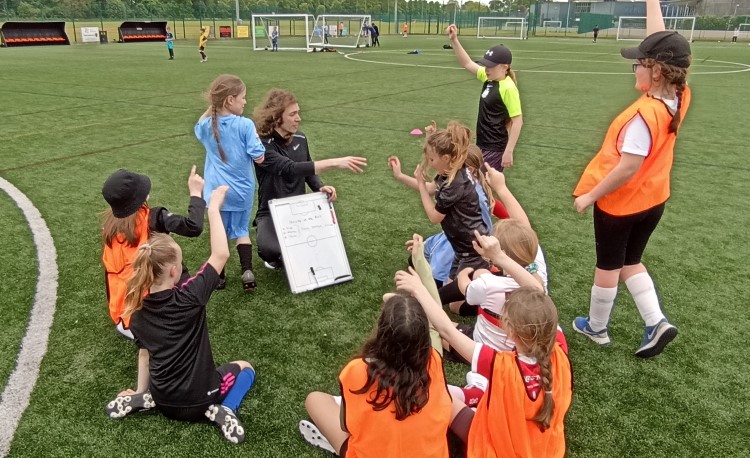
Affirming the intent of trying to pass the ball at the right time is beneficial to your players as it can encourage them to continue to find creative solutions.
Only praising successful passes can lead to players only playing safe or easy passes, rather than attempting riskier ones that can break a press.
To become press-resistant, players need to be co-ordinated, confident and aware. Here is what we mean by that, in this context:
Co-ordinated: Being able to use their body to effectively manoeuvre the ball. This can either be to hide the ball or to use agility and speed to evade or eliminate pressure. Tag games and ball mastery can help develop these components.
Confident: It takes courage for a player to try to stay on the ball, especially when the opponent is determined to win it back.
Being co-ordinated and competent at manoeuvring the ball can increase a player’s sense of competence, giving them more confidence in themselves. Also, lots of encouragement to stay on the ball can help players to find this courage.
Using 1v1 and 2v2 games can give players the opportunity to practise and develop their self-esteem.
Aware: Knowing the exact location of team-mates, the opposition and space in relation to their own position will help players make the best decision on whether to retain the ball.
For example, if you know where the defender is, you can use your body as a barrier to protect the ball and prevent that opponent from getting to it. Using games with interference and/or multiple goals to score in can help develop a player’s awareness of what is around them.
Sometimes, they might need prompting to "have a look" (scan) before they get on the ball. Scanning frequency increases with age, as players become more experienced and confident with their ability to control the ball.
The "stay on the ball" message is beneficial to players whether they are complete novices or playing at a high level.
As a coach who has worked with girls from grassroots to Regional Talent Clubs, I have noticed that a lot of girls lack confidence and won’t believe in themselves in 1v1 situations, choosing to give a simple pass to a more dominant team-mate.
After developing their individual ability to retain the ball, they become more competent and confident enough to dribble during games. This can help build trust between team-mates, as they can depend on each other to retain the ball. Also, this will often lead to a wider social circle with team-mates, as co-operating with each other will create and strengthen bonds.
You have to be consistent with "stay on the ball" message during games and training, especially when coaching young and/or inexperienced players.
At some point in their career, clearing the ball or kicking it out of play is the right decision. However, if young and/or inexperienced players are instructed and encouraged to do this, it is all they will ever be able to do.
Numerous errors of judgement can be expected - it is all part of their learning process and will be worth it.
When it happens, seeing young players expressing themselves, playing with flair and growing in confidence is a joy to watch.
Newsletter Sign Up
Newsletter Sign Up
Discover the simple way to become a more effective, more successful soccer coach
In a recent survey 89% of subscribers said Women's Soccer Coaching makes them more confident, 91% said Women's Soccer Coaching makes them a more effective coach and 93% said Women's Soccer Coaching makes them more inspired.
*includes 3 coaching manuals
Get Inspired
All the latest techniques and approaches
Women's Soccer Coaching offers proven and easy to use soccer drills, coaching sessions, practice plans, small-sided games, warm-ups, training tips and advice.
We've been at the cutting edge of soccer coaching since we launched Soccer Coach Weekly in 2007, creating resources for the grassroots youth coach, following best practice from around the world and insights from the professional game.
